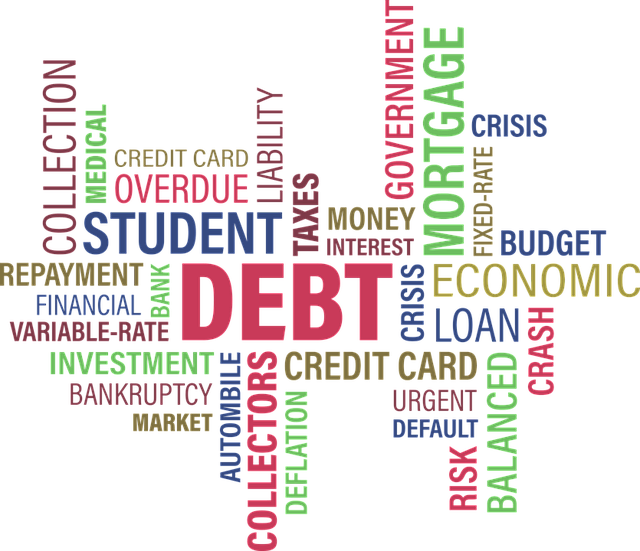The True Cost of Debt: How Interest Rates Impact Your Finances

Debt is a powerful financial tool. It can help you achieve significant life goals, such as buying a home, pursuing higher education, or starting a business. However, debt comes with a cost—interest. Understanding how interest rates work and their impact on your finances is crucial to managing debt responsibly and avoiding financial pitfalls. This guide breaks down the true cost of debt and how interest rates can influence your financial well-being.
Table of Contents
What Are Interest Rates and How Do They Work?
Interest is the cost of borrowing money, expressed as a percentage of the loan amount. It compensates lenders for the risk they take by providing you with credit.
Types of Interest Rates
Fixed Interest Rates:
- Remain constant over the life of the loan.
- Offer predictable monthly payments.
- Common in mortgages and car loans.
Variable (or Adjustable) Interest Rates:
- Fluctuate based on market conditions or a benchmark rate, such as the prime rate.
- Can lead to lower initial payments but higher costs over time.
- Frequently used in credit cards and some mortgages.
The Impact of Interest Rates on Different Types of Debt
Credit Cards
- High Rates: Credit cards often carry interest rates between 15-25%, making them one of the most expensive forms of debt.
- Minimum Payments: Paying only the minimum can significantly increase the total cost due to accrued interest.
- Example: A $5,000 balance at 20% APR with minimum payments could take over a decade to pay off and cost thousands in interest.
Student Loans
- Federal Loans: Offer fixed rates, typically lower than private loans.
- Private Loans: Variable rates can lead to fluctuating monthly payments and higher overall costs.
- Impact: Even a 1% difference in interest can add thousands to the cost of repayment over a 10-20 year term.
Mortgages
- Long-Term Impact: Small changes in interest rates can dramatically affect the total cost over a 15- or 30-year loan term.
- Example: On a $300,000 mortgage, a 1% rate increase can add over $60,000 in additional interest payments.
How Interest Rates Are Determined
Economic Conditions:
- Central banks (like the Federal Reserve) adjust benchmark rates to manage inflation and economic growth.
- Higher rates are used to curb inflation; lower rates stimulate borrowing and spending.
Creditworthiness:
- Lenders assess your credit score, income, and debt-to-income ratio to determine the interest rate you qualify for.
- Higher credit scores typically result in lower rates.
Loan Type and Term:
- Shorter loan terms often come with lower interest rates than longer ones.
- Secured loans (like mortgages) generally have lower rates compared to unsecured loans (like credit cards).
The Long-Term Cost of High Interest Rates
Interest rates can have a compounding effect, meaning you may pay interest on unpaid interest. This phenomenon, known as compound interest, can significantly increase the cost of debt.
Illustration of Compound Interest
- A $10,000 loan at 10% APR compounds annually:
- Year 1: $1,000 interest.
- Year 2: $1,100 interest (on $11,000).
Over time, the interest can outpace the principal if payments are not managed effectively.
Strategies to Minimize the Cost of Debt
Improve Your Credit Score
- Pay bills on time to build a positive payment history.
- Keep credit card balances below 30% of your credit limit.
- Avoid applying for multiple loans in a short period.
Negotiate Lower Rates
- Contact your credit card issuer to request a rate reduction.
- Refinance loans to take advantage of lower interest rates.
Make Extra Payments
- Pay more than the minimum to reduce the principal faster.
- Target high-interest debts first to save on interest costs (the avalanche method).
Consolidate Debt
- Combine multiple debts into a single loan with a lower interest rate.
- Balance transfer credit cards often offer 0% interest for an introductory period.
How Interest Rates Affect Your Financial Goals
Interest rates impact more than your monthly payments—they can influence your ability to save and invest.
Opportunity Cost
Money spent on interest is money you can’t save, invest, or use for other financial goals.
Debt-to-Income Ratio
High-interest debt increases your debt-to-income ratio, which can limit your ability to qualify for additional loans or secure favorable terms.
The Role of Inflation and Interest Rates
Inflation and interest rates are closely linked. High inflation often leads to higher interest rates, which can make borrowing more expensive. However, inflation also erodes the value of fixed debt, meaning your repayment amount effectively decreases over time.
Real-Life Example: Calculating the Cost of Debt
Consider a $20,000 car loan at 7% interest over five years:
- Monthly Payment: $396.02
- Total Interest Paid: $3,761.21
Refinancing to a 4% rate reduces the total interest to $2,096.78—a savings of over $1,600.
Signs of Unmanageable Debt
Recognizing when debt becomes unmanageable is critical. Warning signs include:
- Paying only the minimum on credit cards.
- Relying on new loans to pay existing debt.
- Experiencing stress or anxiety over finances.
If you’re struggling with debt, consider seeking help from a credit counselor or financial advisor.
Conclusion: Taking Control of Your Debt
Understanding the true cost of debt and the impact of interest rates is essential to making informed financial decisions. By improving your credit score, shopping for the best rates, and actively managing your payments, you can minimize the cost of debt and free up resources for your financial goals.
